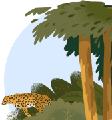With inputs by Hrishikesh Deshmukh, Director User Interface / User Experience
As businesses, we all want to build products and services that make a difference to people’s lives. But we often get so caught up in the product itself – the look, the feel, the features, the technology – that we forget about the customer or the people for whom we’re actually designing that product. Who are these users? What is the problem we’re seeking to solve for them, and is there a deeper root cause? Have we considered all possible solutions?
Design thinking pushes us to ask these questions, so that we can create truly targeted solutions that customers love. It’s essentially a creative approach to problem-solving that prompts us to challenge assumptions, redefine the way we think, experiment with solutions, and continuously incorporate feedback.
At Salesforce, design thinking is central to innovation. And in this article, we’d like to show you how we apply this philosophy to build better solutions. We follow a typical double diamond process that involves exploring the human context, converging on a problem statement, developing different ideas, and iterating on potential solutions.
Design thinking at Salesforce

Step 1: Start with empathy

Step 2: Define the challenge
We then define high level themes catering to specific business needs. For example, every industry we serve – be it banking, communications, or healthcare – has specific themes identified. These themes are broken down into multiple epics (series of tasks) that focus on solving user needs or problems in a given release.
The key here is to come up with a problem statement synthesising user needs based on feedback captured in the previous stage. The problem statement should highlight the gaps between current and desired user experiences.
We use the following formula to define the problem statement:
[User … (descriptive)] needs [requirement… (verb)] because [insight … (compelling)].
For example:
A fulfilment manager needs to view information related to the health and performance of an order management (OM) application and other downstream systems because he can then understand the operational status of the OM.
Next, we generate a few ‘how might we’ questions to address the problem statement. End users are invited to vote on their favourite questions which are then used in the ideation phase.
For example:
- How might we present data points related to the health and performance of OM applications?
- How might we visualise the data comprehensively?
- How might we keep the data up-to-date?
Step 3: Ideate on solutions
Step 4: Prototype
In every product release, we first create and review low fidelity prototypes (simple, low-tech concepts) with stakeholders from Product and Technology. Based on their feedback, high fidelity prototypes are created. This iterative process improves efficiency, accelerates time-to-market, lowers product development costs, reduces redesigns, and ultimately leads to more user-friendly products.
At Salesforce, rapid prototyping can be done right on the Developer Edition (DE) organisation - our app creation platform. Once the prototypes are created, it’s time to reconnect with users for their feedback.
Step 5: Build and roll out
Step 6: Validate and collect feedback
At Salesforce, design is never done. The iterative process of listening, collaborating, testing, learning, and growing continues.
To guard against biases, we capture user feedback regularly through surveys, in-person interviews, and focus groups. We also have an inline feedback mechanism to collect responses to short surveys. Essentially, a lot of evaluative and generative research goes into our products before they’re launched.
That, in a nutshell, is our approach to design thinking. Let’s now look at how we empower the Salesforce ecosystem to make design thinking skills part of their portfolio.
Become a Salesforce-certified designer
Salesforce has introduced initiatives for people from any career or educational background to learn about and deliver incredible user experiences. Among these initiatives are the Salesforce Designer role on Trailhead and User Experience Designer certification. The certification is for individuals who want to demonstrate their knowledge, skills, and experience in the following areas: UX Fundamentals, Human-Centred Design, Declarative DesignTesting, Salesforce Lightning Design System (SLDS)
Adam Doti, VP and Principal Design Architect at Salesforce, describes the course as “a unique opportunity for Salesforce Admins, Architects, Consultants, Developers, and Marketers to cultivate in-demand design skills, advance their careers, and create solutions that sustainably support the needs of individuals, organisations, and communities.”
Speaking about the value of the course, Asterisk Loftis, Practice Manager of Design Services at Fonteva (a Salesforce Partner since 2010) says, “Design is inherent to everything on this earth. We’re all designers in our own way and can communicate design with thought, intent, and purpose that ultimately changes people’s lives and solves their most important problems. At the same time, It’s important to understand that design is not just about making things look pretty, it’s a skill you can cultivate and improve. This new certification will give you the foundational knowledge to confidently build design solutions on the Salesforce Platform.”





